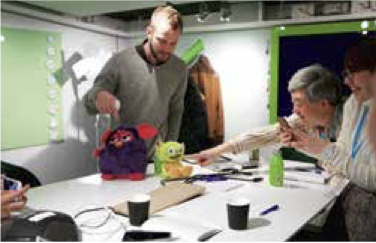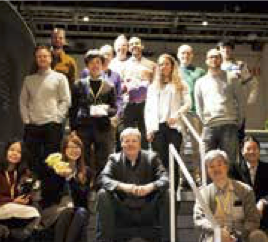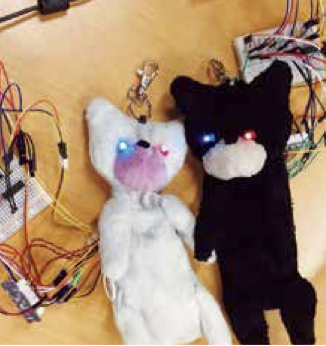The World Where Things Behave Like Living Beings
Ericsson and KMD “Social Things”
Led by Professor Masa Inakage, five faculty members and six students began work on the “Social Things” project with Ericsson in 2013, exploring different aspects of future infor- mation environments that will be possible with the next- generation 5G networking standard.
Ericsson presented the idea of the “Social Web of Things,” an evolution in the “Internet of Things” (IoT) in which things are not only networked, but connected to social networks. KMD built on that concept to propose “Social things,” a world in which things autonomously build networks and act as if they are living entities.
During Phase 1 in 2013, the project designed emotional experiences using a restaurant as a case study. In Phase 2 that began in 2014, the members created scenarios exam- ining how social things would function and designed some real-life social things. Participants hold Skype meetings with Ericsson twice a week, Ericsson personnel give workshops at KMD, and students visit Ericsson’s research labs in Sweden to show and discuss their prototypes.
One of the attractions of the Real Project is that it provides the opportunity to imagine new cities and societies. In this case, high-performance communications will extend not only to furniture and home appliances, but even to medical equipment and industrial machinery.
“There are cultural differences between Japan and Scan- dinavia but our approach to technology is more or less the same. Students in the project come from all sorts of backgrounds and careers. We have interaction designers, product designers, and even some musicians. As their diver- sity deepens their discussions, they have been able to arrive at a more concrete picture of what the future will be like. International projects like this demonstrate how much can be achieved through collaboration,” says Professor Inakage.
(This article was written in March 2015.)
Discussion about the prototypes at Ericsson’s research labs.


Prototypes by
